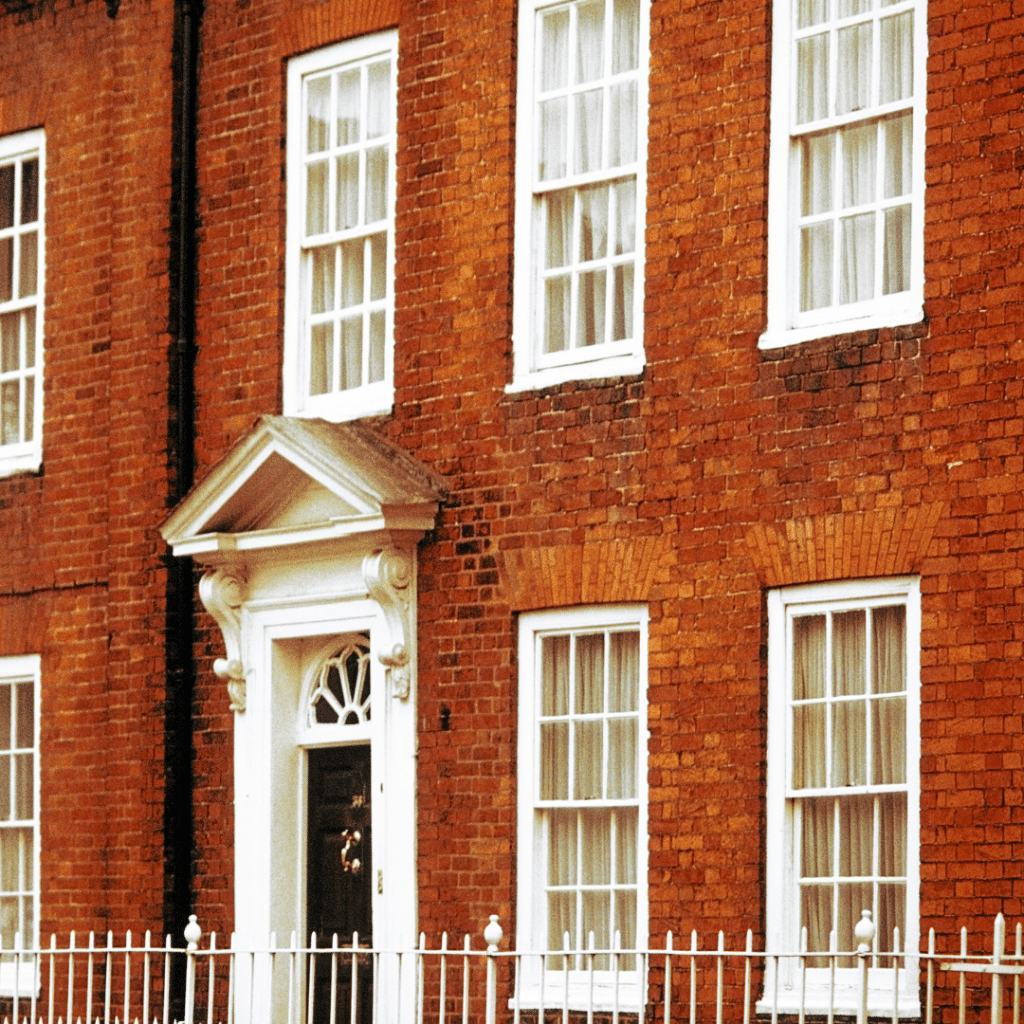True Georgian and Victorian Sash Windows: Historic Window Design
Sash windows stand as timeless marvels of architectural elegance, casting a window into the past eras of grandeur and design prowess. The True Georgian and Victorian styles of sash windows hold a distinctive charm, each capturing the essence of their respective periods with unique construction techniques and decorative embellishments.

The Fascinating Charm of Authentic Georgian Sash Windows
The Georgian era, spanning from the 18th to the early 19th century, was characterised by a revival of classic architectural forms influenced by ancient Greece and Rome. True Georgian sash windows exude a certain grace through their symmetrical proportions, expansive glass panes, and a sense of refined simplicity.
The Fascinating Design of Authentic Georgian sash windows
One defining feature of True Georgian sash windows is the ‘six-over-six’ or ‘eight-over-eight’ pane configuration, where the glass is divided into six or eight panes neatly organised in two rows. These larger panes were instrumental in illuminating interior spaces with natural light, while the slender glazing bars provided structural reinforcement, compensating for potential weaknesses in the joinery.
The Dowel Joint
Interestingly, True Georgian sash windows often employed the dowel joint, a traditional but potentially vulnerable method of construction. In this technique, wooden dowels were inserted into corresponding holes in adjoining pieces of wood. However, this approach had its limitations, resulting in potential structural weaknesses. To counterbalance this, the introduction of robust glazing bars helped fortify the windows, ensuring they remained structurally sound and true to the meticulous craftsmanship of the Georgian era.

Victorian Sash Windows: An Embellishment of Craftsmanship
The Victorian era, spanning from the mid-19th to the early 20th century, was marked by an era of innovation and eclectic design. Victorian sash windows showcased this innovative spirit through their ornate detailing and intricate features.
The Fascinating design of authentic Victorian sash windows
Unlike the understated elegance of Georgian windows, Victorian sash windows featured a wider array of pane arrangements, such as the ‘two-over-two’ or ‘two-over-four’ configurations, offering a greater design versatility.
The tenon joint
In contrast to True Georgian sash windows, Victorian iterations often embraced the tenon joint. This method involved inserting a projecting ‘tenon’ from one piece of wood into a corresponding recess or ‘mortise’ in another piece, creating a secure and robust connection. This sturdier joinery technique was well-suited to the intricate designs and diverse shapes prevalent during the Victorian era.

The Advent of Sash Horns: Where Utility Meets Aesthetics
As the 19th century unfolded, another innovative feature emerged within sash window design – the introduction of sash horns. Sash horns, initially devised to prevent the upper sash from descending too far, not only served a functional purpose but also added a visual embellishment to the windows’ profiles. These horn-like protrusions, positioned at the upper corners of the upper sash, became a hallmark of both practicality and aesthetics.
Safeguarding Heritage: Ventrolla’s Expertise in Sash Window Restoration
As guardians of architectural legacy, preserving the authenticity and elegance of True Georgian and Victorian sash windows requires specialised expertise. Ventrolla, a distinguished sash window specialist, has mastered the art of sash window restoration and repair.
Ventrolla’s Commitment to Authentic Craftsmanship: Skilfully Crafting Tenon Joints
When it comes to preserving the unique characteristics of different eras, Ventrolla’s expert artisans specialise in carefully crafting tenon joints for Victorian windows. This dedication ensures that the distinct construction methods of each period are faithfully maintained, showcasing the true essence of craftsmanship.
Preserving Strength and Authenticity: Ventrolla’s Artful Approach to Sash Window Restoration
In their meticulous restoration process, Ventrolla goes beyond replicating dowel joints for True Georgian windows, by incorporating the robust tenon joints, ensuring not only an authentic recreation but also the utmost durability. This thoughtful blending of techniques guarantees that the windows not only look historically accurate but also stand the test of time.

Preserving unique features and construction techniques
Whether it entails accurately replicating dowel joints for True Georgian windows or skilfully crafting tenon joints for Georgian and Victorian counterparts, Ventrolla’s team of skilled artisans ensures that each era’s unique features and construction techniques are meticulously preserved. Moreover, in the realm of sash horns, Ventrolla acknowledges their dual significance – functional and aesthetic – and takes pride in upholding these elements as integral components of historic sash windows.
In the midst of all the modern advancements, Ventrolla’s unwavering commitment to rejuvenating the splendour of True Georgian and Victorian sash windows stands as a testament to the enduring allure of classic design.
Bridging the past with the present
Sash windows stand as both architectural treasures and storytelling conduits, bridging the past with the present. The distinctive construction methods and design nuances of True Georgian and Victorian sash windows serve as glimpses into the sensibilities of their times. Ventrolla’s dedication to reviving the grace of these windows underscores the lasting impact of bygone eras, reminding us of the enduring elegance that sash windows bring to spaces old and new.
If you’re interested in learning more about how Ventrolla can assist in preserving the history of your property or are considering renovating the enchanting charm of your current windows, we invite you to get in touch with Ventrolla. We’re here to discuss how we can help you maintain the unique character and allure of your windows while ensuring they stand the test of time. Contact us today on 0800 027 7454 or contact us here to embark on a journey of preserving your property’s rich history through expert window restoration.
